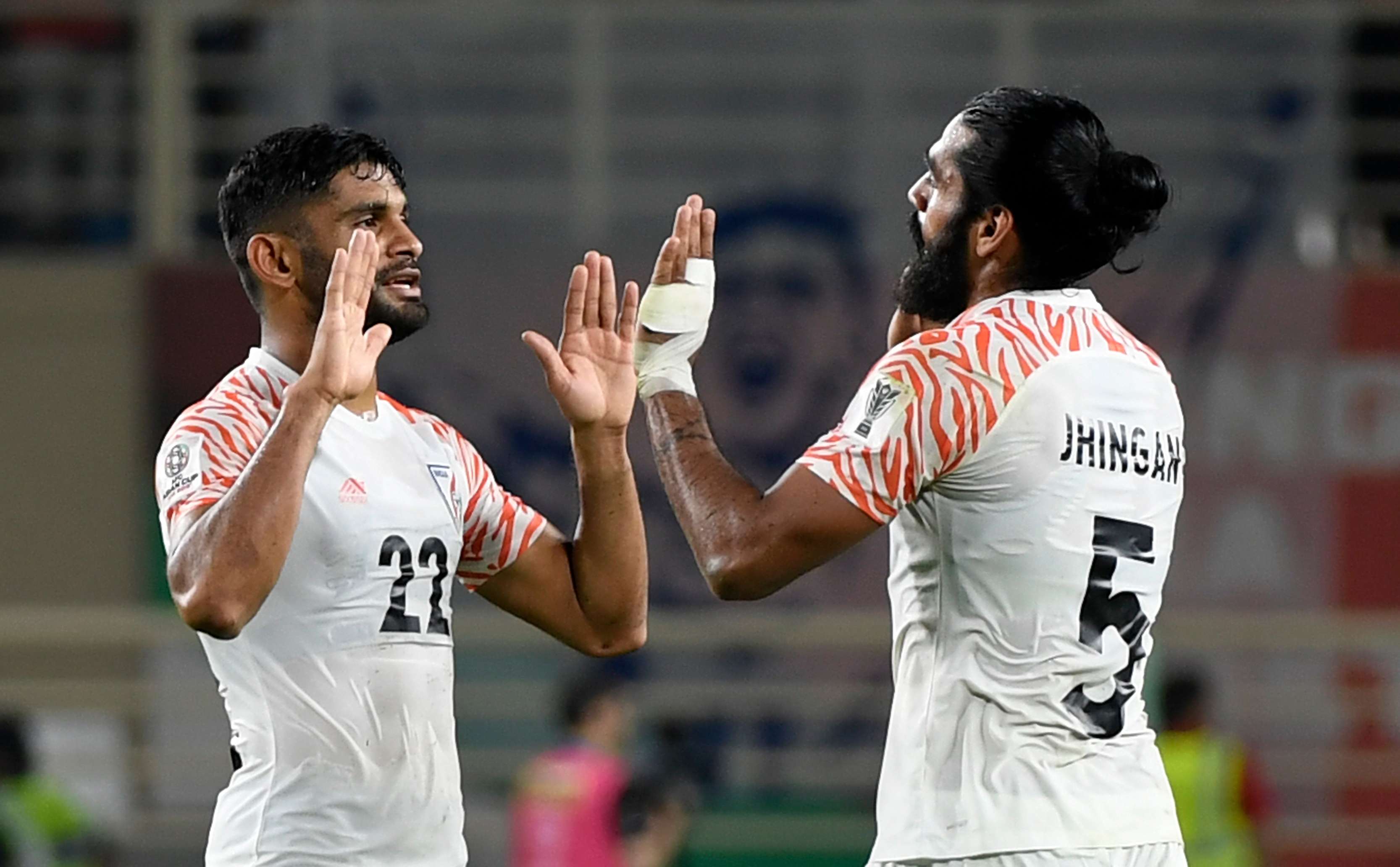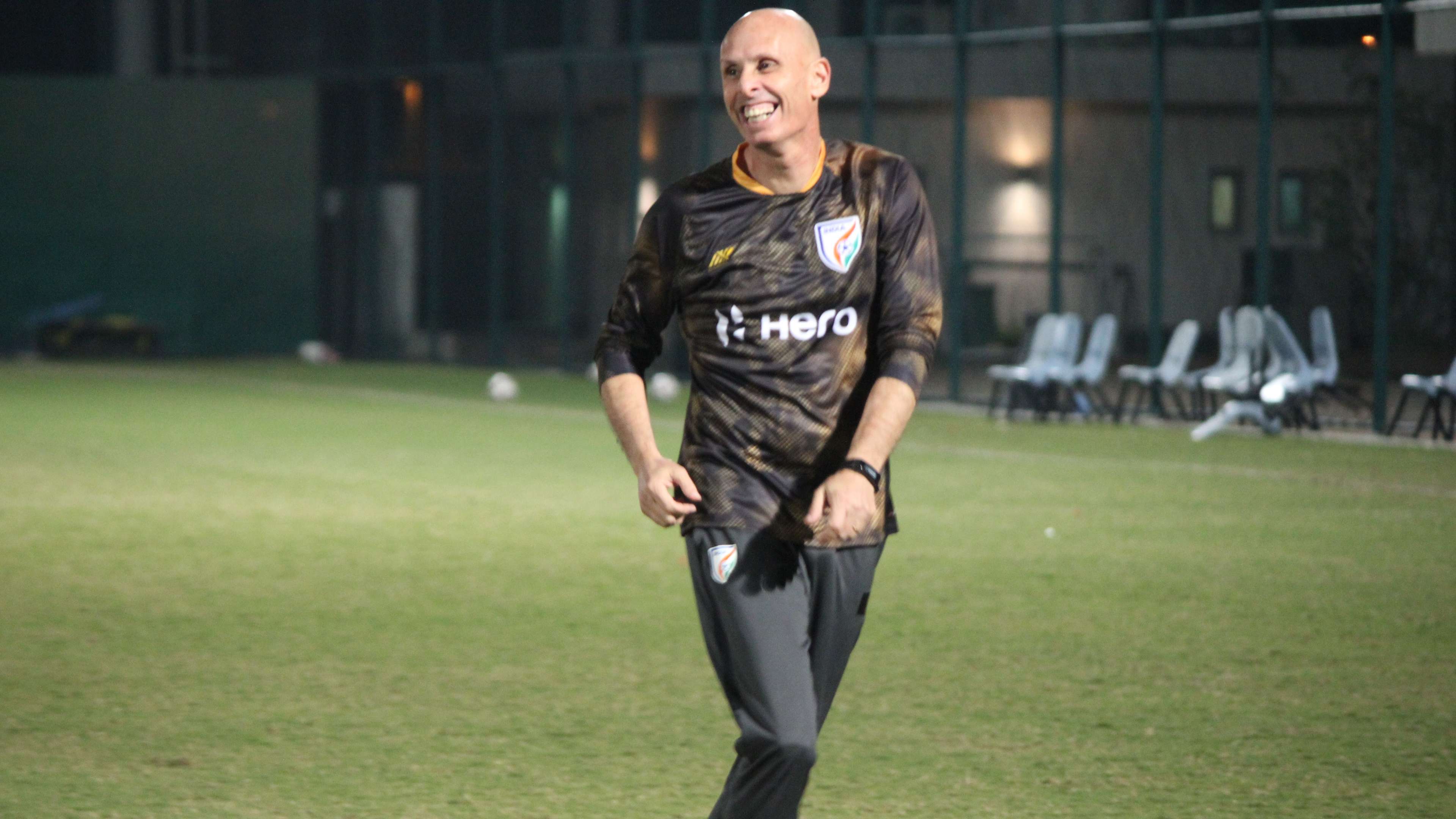If you were going by media reports, the Indian team was like a family up in arms against the patriarch. If you were going by the reactions on social media, Stephen Constantine – a coach who chooses on perceptions and not on form or quality - was the last obstacle India needed to clear to march back into the footballing elite.
After India’s unexpected and overwhelming 4-1 victory against Thailand though, Stephen stood there with a wry smile on his face. He is not someone new to taste success, having led two countries to their best ever FIFA rankings in the last decade, but the fact that his team is topping the table – albeit temporarily – in a group comprising of UAE, Bahrain and Thailand was too much to digest at one go. The brickbats had made way for the bouquets, as he soaked in the warmth of the thunderous support, so far away from both home and his workplace.
But that is why he probably chose football, to have these magical moments crop up in life after a tough upbringing, to trot the globe writing underdog stories with least fancied teams. And the one, written on Saturday evening, was one for the ages.
The very evening of March 2015 on which Constantine resumed his second stint in India, the updated ranking tables showed India sinking to an all-time low of 173. At that very moment, if anyone was given the choice to hire a coach who can win a SAFF Cup for India, make the Blue Tigers qualify for the AFC Asian Cup and win the first match 4-1 there, they would have grabbed it with both hands.
It’s one thing to be disappointed by Stephen’s preference of prudence over panache and it’s a different thing altogether to not gauge his stint vis-à-vis India’s performance from the end of 2011 AFC Asian Cup till his arrival. Saturday’s win gave the verdict on how his tenure has taken India out of the abyss, not to the La La Land, but at least to a respectable launchpad nonetheless.

Despite all the hype about his insipid playing style and misguided team selection, Stephen faced little criticism from mainstream media, mainly because of his impeccable past records and shower of faith on the team’s core. In the investing world, a ‘buy and hold’ portfolio is the most sought after – one that you choose for once and then keep on reaping the dividends. Stephen embarked on building his own from the onset, giving out wholesale debuts to the next generation. Within a year of his coming, the likes of Gurpreet Singh Sandhu, Sandesh Jhingan, Anas Edathodika, Pritam Kotal, Halicharan Narzary had cemented their places in the starting XI. Once done with selecting the skeleton, he did a little tinkering and the score-line provided enough evidence of the benefits of having that strategy right.
The contest also raised a few new questions.
Much had been written about India’s tactical manipulation of the erstwhile ranking system and how that would end up giving the administration a false sense of pride. But as things stand, being in the second pot of the draw is turning out to be the reason India can dream about moving to the next round, having avoided mightier outfits. So maybe, it was not as bad as it was made out to be?
A more common belief was that India were performing above their actual level of competence, which was not sustainable. The fear was supported by the widely used theory of mean reversion of statistics, which in loose term says that any deviation from long-term trends will eventually revert back to its assumed level.
The goalless draw against China, the narrow wins against Myanmar and Kyrgyzstan had given enough hints that India were riding on luck a bit too often. But now with this result, do we conclude that India probably are better than what the common wisdom says, or was this another instance of over-performing? We will need a few more data points over the next 12 months to end up at a logical conclusion but the temptation of choosing the first option is going up after every match.

India's goalless draw against Oman in the runup to the tournament could also be an indication towards the same. Or is it just another sign that India are ready to scale up the Asian rankings ladder and pose a genuine claim for one of the eight World Cup spots the continent might get for the 2026 World Cup?
That means it can also be considered a good time to re-adjust the direction of fingers raised. The common tradition is that national team coaches choose their sides based on club performances and are questioned if the players fail to perform. But now is the turn to question around – why are the likes of Pritam Kotal, Halicharan Narzary and Sandesh Jhingan so poor for their clubs for long durations, even though they excel in more testing situations wearing the national jerseys? Does that mean the club coaches are not being able to use them at optimal levels or do we have the successors of the likes of Subrata Paul and Renedy Singh – who will always be far superior for the country than they are with their clubs?
But this night doesn’t really seem like the one where one would seek to kindle new debates. Stephen though had a different viewpoint. “If I say it is just another result, will that be a cliche? Because it is,” he said after the match, looking forward to the road ahead.
The fans, once again, have a reason to disagree with him.



.jpg?auto=webp&format=pjpg&width=640&quality=60)
.jpg?auto=webp&format=pjpg&width=640&quality=60)